I recently arrived back in Manila after an impromptu adventure spending Christmas alone in a random hotel near the airport in Brunei, and finished off the remainder of the year properly, by ringing in the newest journey of 2016 launching fireworks with the happy locals in beautiful Ubud, Bali!
How was it that I found myself, in this particular spot, just a blip in the world?
Grace Ledding, my former roommate, friend, and co-parent to our rescue dog Pablo, called me a week before Christmas. The conversation is as follows:
Grace: “Hey Mischa, wanna go to Bali for New Years?
Me: “Fuck yeah I wanna go to Bali for New Years!”
And that was that. We booked our flights a few days later; Grace’s departing from L.A., mine from Manila, where we’d ultimately meet up at Kuta overlooking the stellar sunset of the Indian Ocean.

Waiting for the fast boat from Gili T to Padang Bai, Bali
Yes, it is as poetic as it sounds. Even more so since Grace was actually the one who dropped me off at LAX last October post-corporate Koolaid diet, to set off on the road less traveled as a Digital Nomad.
What is that anyway?
Digital Nomads
People who are location independent and use technology to perform their job. Digital nomads work remotely (telecommute), which is now economically possible due to cheap internet access, smartphones and voice over internet protocol (VoIP) to keep in contact with clients and employers.
-Investopedia
I’m part of a statistic, a rising one in fact, dubbed by many as a Digital Nomad. Andreessen Horowitz calls us ‘Telepresent,’ while I like to refer to this thriving and growing tribe as the progressive workforce. We’re location independent, drivers of the gig economy, and over the traditional measurements, and confines of what success and office hours look like.
What’s the secret sauce to working from wherever in the world and actually making it work for you?
Surprise! There is no secret sauce — it’s called being resourceful.
My office is called Wifi. My conference room is called Slack. My team is called virtual because I know — and over 15 million people in the U.S. know— one does not need to be physically in an office to be productive, to do work, or to be effective.
If you’re looking for one of those self-help lifehacks, 20 things-you-need-to-do-to-get-your-shit-together-travel-the-world-and-be-cash-money, you’ve come to the wrong post.
But if you want insight on how I keep it moving (no pun intended), below are tools I live by to keep the flow, communication, work, and execution consistent, that will help make your road less traveled a smoother ride:
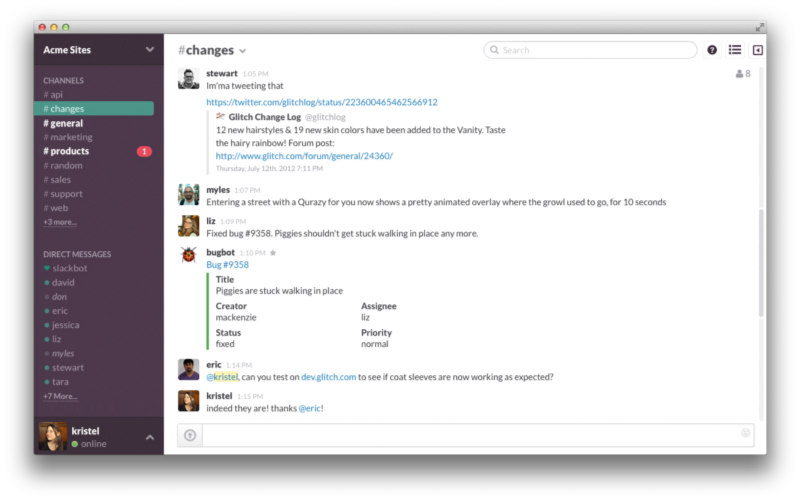
1. Slack
While my office is WiFi, my conference room is Slack. I LOVE Slack and swear by it, especially when coordinating between Los Angeles, Miami, Berlin, Tel Aviv, and Manila. This amazing cloud-based platform brings all communication together in one place for real-time messaging, archiving, and collaboration.
The greatest asset, however, is the integrations. For example, when launching an email marketing campaign, I link Slack to a client’s Mailchimp account and can see in real time, how many new subscriptions were generated.
For my team, I’ve begun using the latest in bots like Howdy, which enables you to train it to run stand-ups, meetings, and automate tasks. Human error is human error. Thankfully there’s a robot that does the minutia of things and eliminates the time sucks of your world.
In general, I view email to be a productivity killer. So much miscommunication occurs as a result of far too many back-and-fourths. That’s why, having conversations that matter housed in their specific channels (i.e., I have Dev for Developers, Design for branding, and Customer Service for…customer service), streamlines processes, enhances productivity, and lessens stress. It’s also mobile, which is of course, an added plus.

Google Hangout
2. Google Hangout
There are Skype people and there are Google Hangout people. I use both, but favor Hangout. Back at Chideo, we used it for our weekly meetings. It was great as we’re able to catch up on progress between LA, Dallas, and New York, while also being able to share files already living in Google Drive.
Another feature I love about Google Hangout, is its ability to record On Air hangouts. This is great for holding webinars, AMA’s, and basically anything when cultivating a community.
The best part — and this is integral for any nomad — is its mobile.
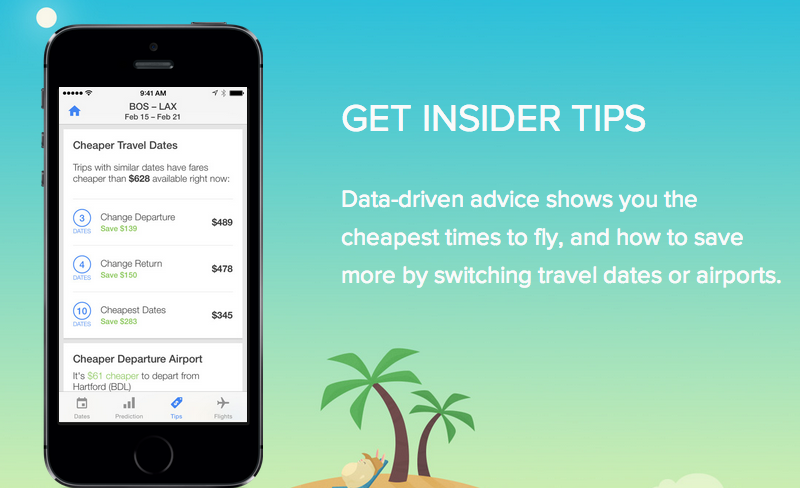
Hopper App
3. Hopper
We’re an on-demand generation living in a mobile world. This includes intelligently finding the best deals for airline tickets, especially on a whim. Jump into Hopper, a mobile app that provides just that. Grace and I used this to book our flights to Bali and there was no point-of-sale that’s happened quicker. No friction? No problem!
4. Stripe and PayPal
You want to travel? You need cashflow. That motorbike, copious amounts of Bintang, and local SIM cards won’t pay for themselves. I’ll touch on positioning, digitizing businesses, generating revenue, and the struggles (oh, they’re real) in a separate post.
But for now, as an entrepreneur and one on the go, traditional banking systems don’t work for me (including deposits).
While I’m still figuring out the best methods (and banking in general needs to be disrupted in the worst way), most nomads are in a distant land, far away from a client they’ll probably never meet. For this, I’ve been using Stripe and PayPal as the portal for payments. I view Stripe as the Google Hangout of payment gateways, while PayPal is Skype.
Many businesses are integrating Stripe into their backend because of the API, flexibility, quality customer service, and simplicity. The only caveat is that Stripe isn’t applicable in all countries. Meaning, if you’re a buyer, you can use Stripe to pay whoever in the world. As the merchant, you can only link Stripe to your bank account if you’re in these countries…for now.
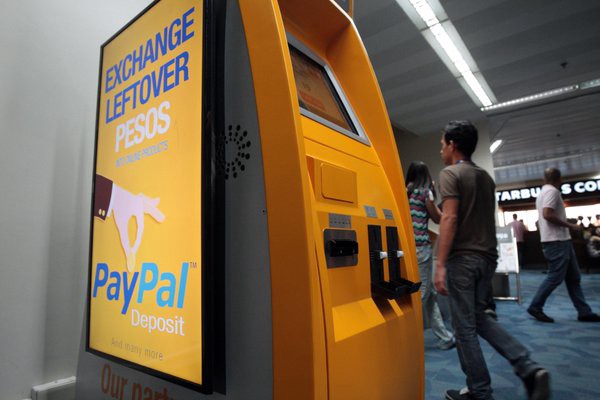
TravelersBox
5. TravelersBox
You know what’s worse than exchanging any leftover currency? When they’re coins. No one wants that jingle, jangle in your pocket life.
In comes TravelersBox to save the day. You may have seen them at airports. It’s a kiosk that enables you to deposit your extraneous foreign currency, automatically convert the amount, then deposit it into your PayPal account. Amazing right?
On my most recent trip, I was going from U.S. to Pesos to Brunei Dollar to Rupiah. I’m basically over multiplying and doing division. This is extremely valuable to those who use PayPal for transactions and for those who hate math. They’re also equipped to deposit the change to your Starbucks card, Skype credit, and charitable organizations.
People look for A-ha moments. I look for Duh moments — and that product is the ‘Duh. Why didn’t I think of that?’ moment. It is not only practical and convenient, but it saves money that would otherwise be useless on your next voyage. So get that loose change and deposit it to keep your online biz afloat as you continue the journey.
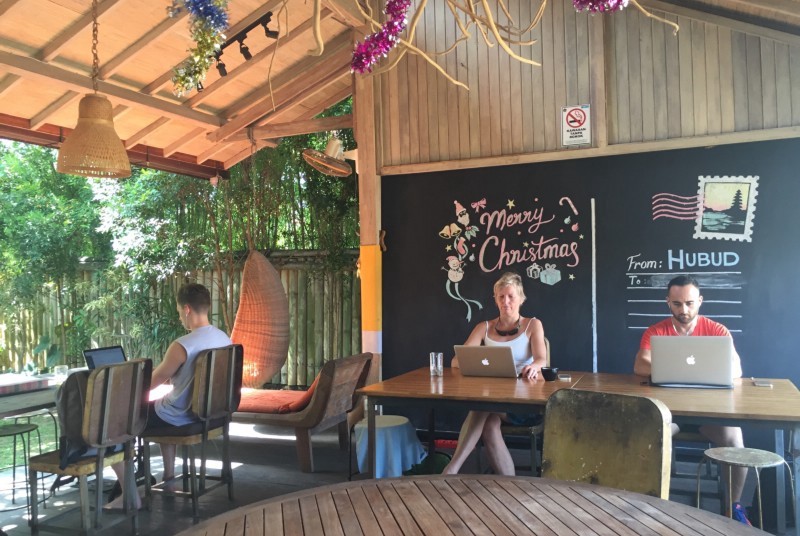
Hubud in Ubud, Bali
6. Coworking Spots
Let’s face it, not all internet speeds are made equal. The luxuries of LTE is one I haven’t felt since October, and as you explore more places in your travels, advertisement for ‘High-speed DSL’ will trigger you to think ahead.
That’s why I love coworking establishments. I’m a member of Impact Hub Manila, which serves as my HQ for holding virtual office court. The membership enables me to work from the other 76 hubs around the world. But while not every country has an Impact Hub, there is an increase of coworking spots arising everyday.
For a usually reasonable fee, (the most I’ve paid was $20 a day and that’s the most I’ll ever pay again), you can use these services for their reliable internet, plentiful coffee, discover a new community, and a new awesome place to work remotely. I worked from Hubud while I was in Ubud. It was glorious. Here’s a video so you can see: https://vimeo.com/152656886
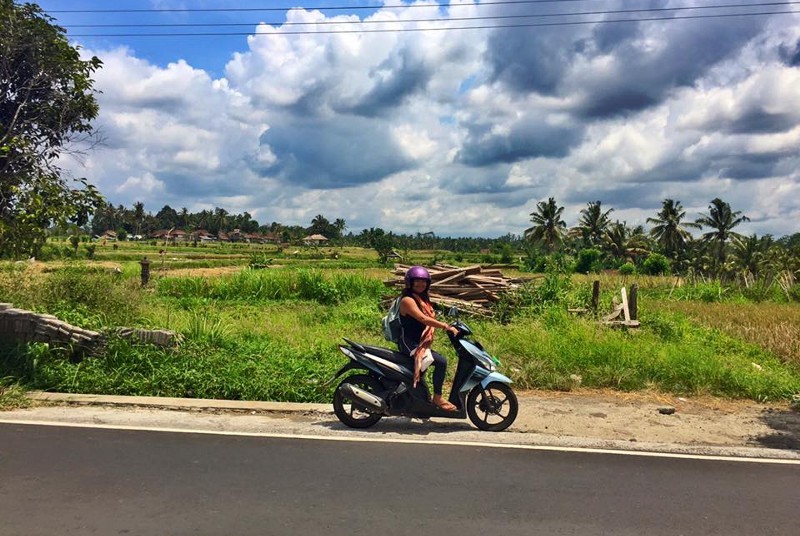
7. Improvise
Life happens, wifi cuts off, something gets water damage, and you’re stuck at a foreign place running out of cash because the country doesn’t recognize your bank account. Been there, done that.
The real asset you have, is the ability to invest in yourself and improvise to make your situation and your life work, when the original strategy doesn’t go as planned. Communities like Workfrom help here, as we can more easily lean on and learn from others’ experiences.
Living off the beaten path is paved with obstacles, but the reward is just too good not to.
So on a hot sunny day in beautiful Bali, when you want to see the rice terraces but don’t want to walk—you get on that motorbike you’ve never driven, onto the opposite side of the road you have zero experience driving on, and just go with it.

Sunset from The Exile on Gili T
While I also love to disconnect (and you should from time to time), there’s less worry and more transparency because of tools like the ones above, empowering us to take a break and enjoy the sunset, from wherever in the world.
Repetition doesn’t make memories. Change does, so embrace new beginnings and have reckless abandon for the unknown.
If you’re into this, share it with your friends. For more storytelling sessions and insights on learning through trial and error, sign-up for Out of Office, my weekly non-TL;DR account of life as a Digital Nomad, and all the bizarre and beautiful events that come alive at the intersection of technology, innovation, airports, and emerging markets.

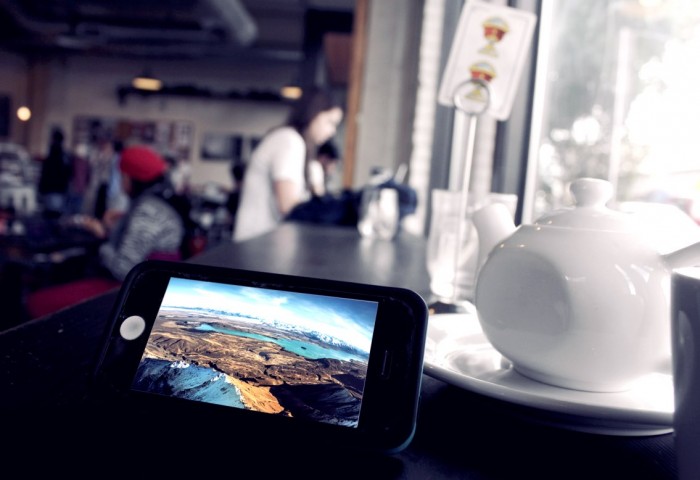

Responses